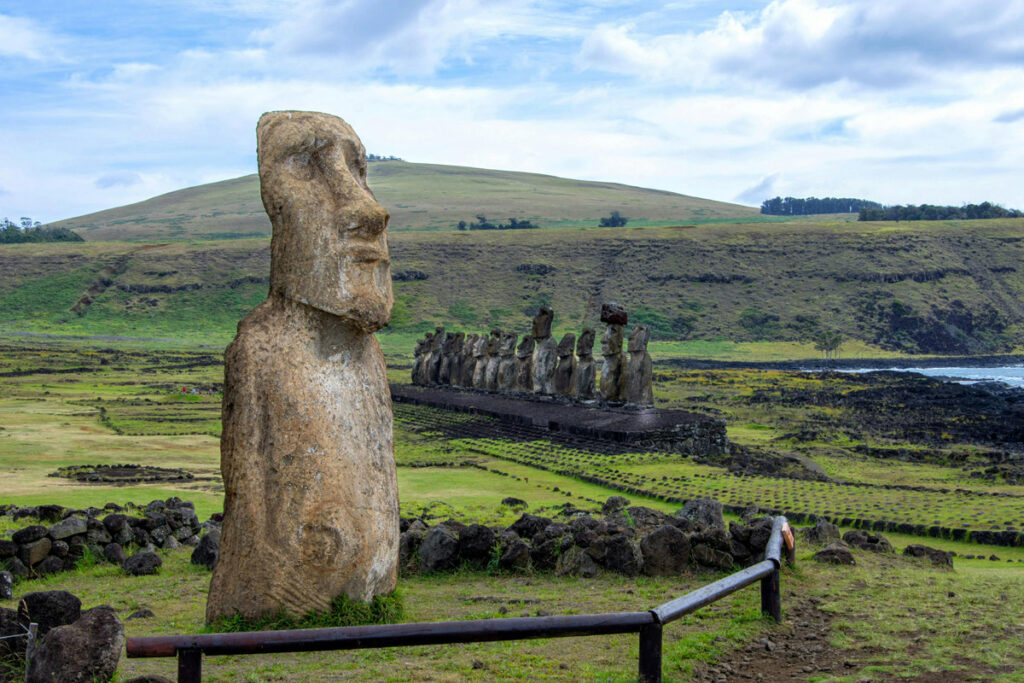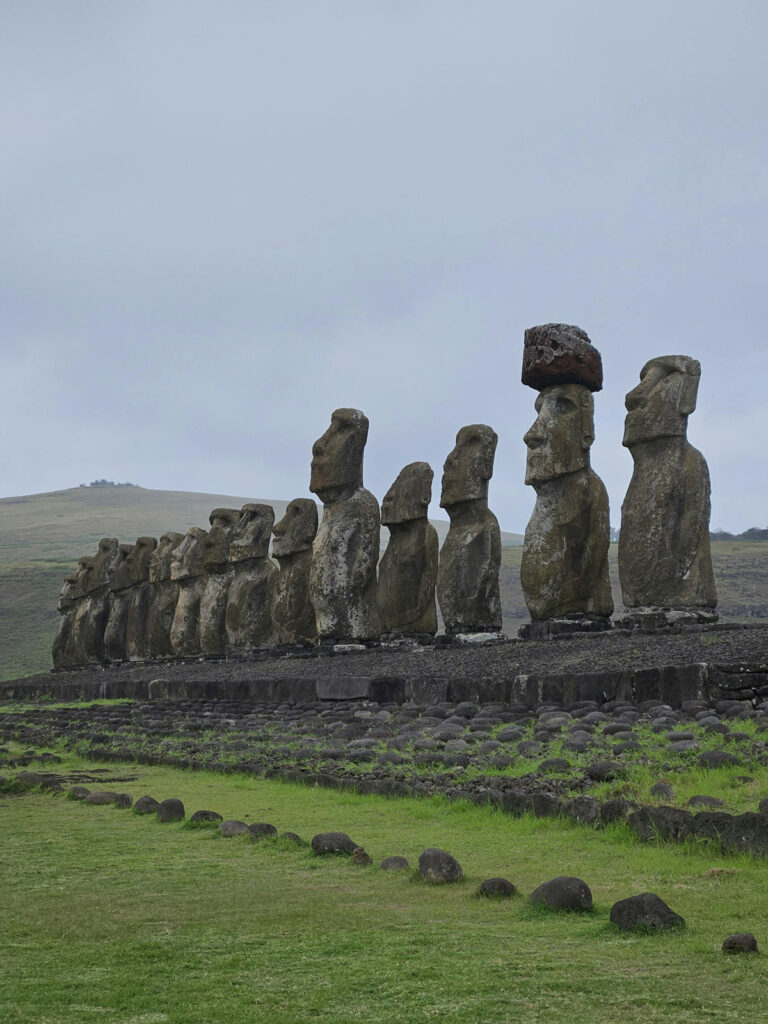
There’s a credible argument to be made that our ancestors were smarter and more innovative than us, despite not having the technological tools we have today. Heck, their ingenuity was probably helped by the fact that they didn’t have modern-day gadgets and gizmos. For example, it amazes me that the Great Pyramid of Giza is the oldest wonder of the ancient world and is the only one still standing. That’s impressive!
At this point you’re probably wondering what in the world has me on this ancient engineering kick, and the answer is this: scientists have figured out how the famous, massive moai statues of Rapa Nui were moved around the island to their ultimate resting sites. Rapa Nui is the indigenous name for the island itself, as well as the Polynesian inhabitants of the place commonly referred to as Easter Island — a name that stuck because the first white explorer set foot there on Easter Sunday. The moai statues have become synonymous with the island, given their imposing presence. 887 were carved out of volcanic rock between 500-800 years ago, and each one is about 13 feet tall and weighs 14 tons. So how did a relatively small population spread them out across the island? Turns out the moai simply “walked.”
A research team made up of scientists from Binghamton University and the University of Arizona conducted 3D modeling and field tests, according to a news release from Binghamton University published on Oct. 9. The release states that the researchers found that, with a system of ropes, a large stone statue could be moved — or “walked” — across the ground in a zigzagging motion with fewer than 20 people.
“Once you get it moving, it isn’t hard at all — people are pulling with one arm. It conserves energy, and it moves really quickly, said Carl Lipo, professor of anthropology at Binghamton and one of the study leads.
“The hard part is getting it rocking in the first place,” he continued, adding, “The question is, if it’s really large, what would it take?”
Lipo and his team theorized that the specific structure of the moai played a large part in their ability to be moved via ropes and zigzagging motions — namely, their wide, D-shaped bases and forward lean.
They tested their theory in real life by creating a 4.35-ton moai replica. The team was able to move the statue 109 yards in approximately 40 minutes, which Lipo said was much speedier than past theories and models.
“The physics makes sense,” he said. “What we saw experimentally actually works. And as it gets bigger, it still works. All the attributes that we see about moving gigantic ones only get more and more consistent the bigger and bigger they get, because it becomes the only way you could move it.”
Lipo also said that the roads carved out across the island are perfectly ideal for transporting the statues in such a way, further supporting the new theory.
Lipo additionally noted that using actual science and modeling to try to understand the truth behind the moai — as opposed to leaning into outlandish theories — is a way to honor the island’s indigenous people.
“It shows that the Rapa Nui people were incredibly smart. They figured this out,” he explained.
He added: “They’re doing it the way that’s consistent with the resources they have. So it really gives honor to those people, saying, ‘Look at what they were able to achieve,’ and we have a lot to learn from them in these principles.”
This is so fricking cool! I admit, I needed to watch the video of the Binghamton scientists moving their replica to really understand what they meant by “walking.” But once you see it, it totally makes sense — especially with statues that have striking faces! So the ropes are fastened to the top part of the moai, then the people manning the ropes gently pull back and forth so that the bottom of the moai appears to take steps in that forward, zigzagging motion they described. I love that this news honors the brain power of the Rapa Nui, as well as the wonderfully curious minds of scientists.
My admiration for the brilliant Polynesians has been in overdrive since I finished Jason Momoa’s Chief of War series (which is great, watch it!) about 18th century Hawaii. Some episodes included behind-the-scenes featurettes, where you got to see how much Polynesian talent was in the cast and creative team. Many native Hawaiians, yes, but you could also feel a real kindred spirit among the greater Polynesian reach, with people from New Zealand and Tonga relishing the chance to tell a story of their shared ancestry. Rapa Nui is definitely a part of that lineage; if you look at a map of the Pacific, the island forms a fairly equilateral triangle with Hawaii and New Zealand. Those distances were thousands of miles apart, though, which shows again the incredible sea-faring prowess of Polynesians!

Photos credit: Miguel Cuenca, Diego Gonzalez, Agustín Ramírez and JB on Pexels